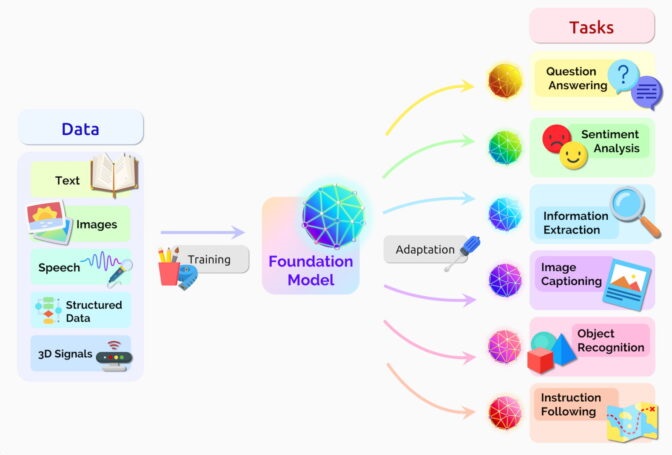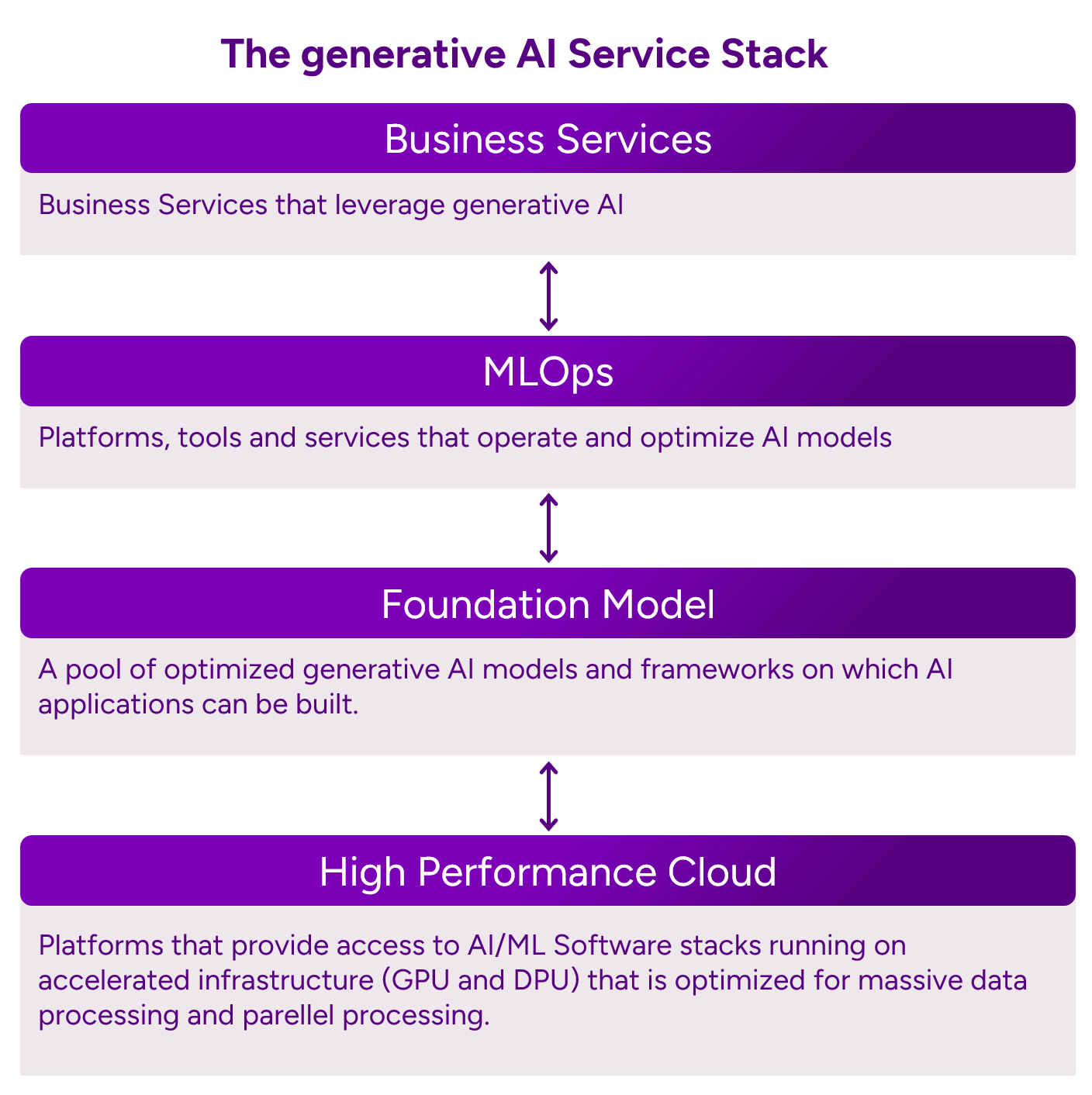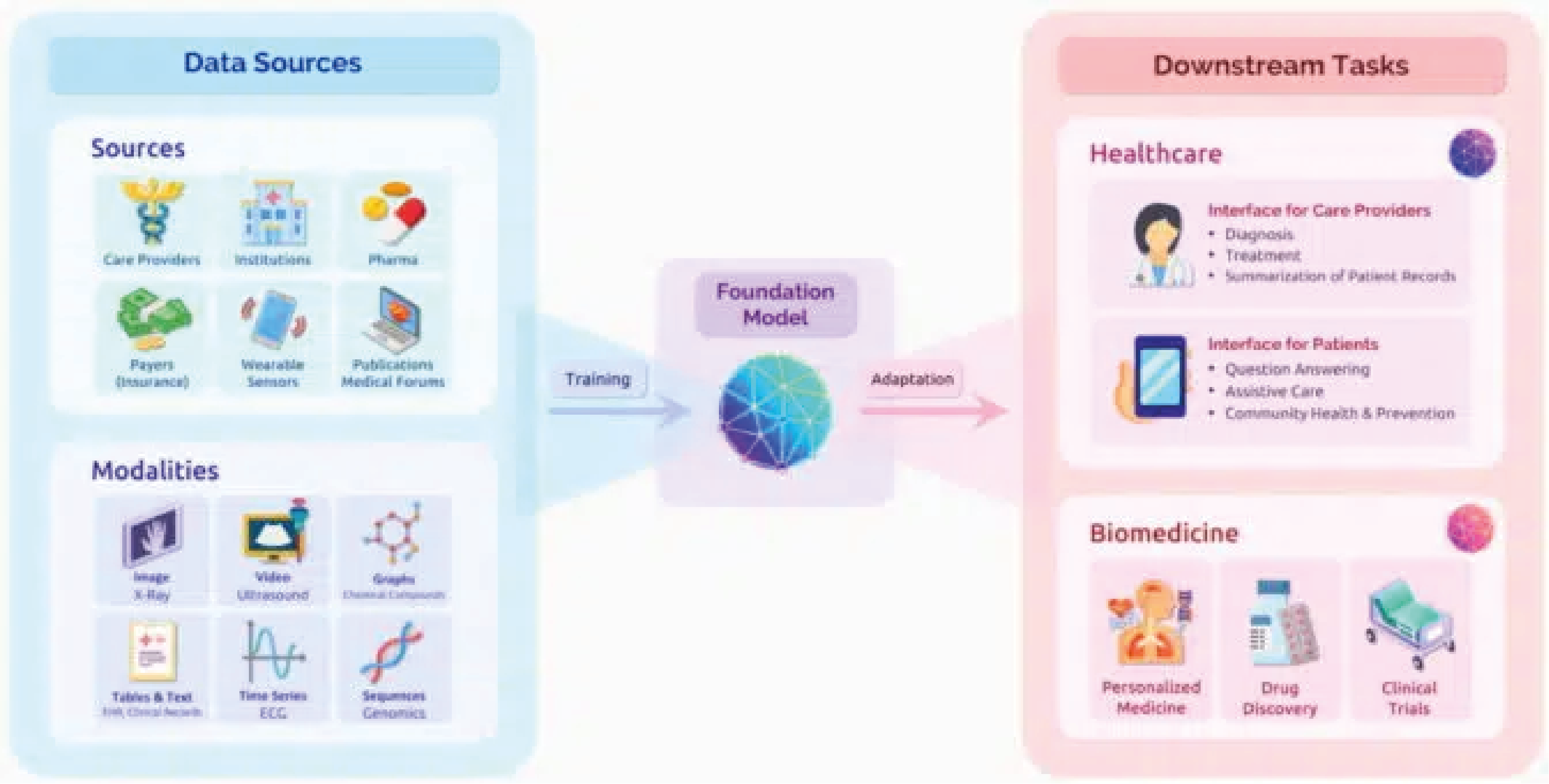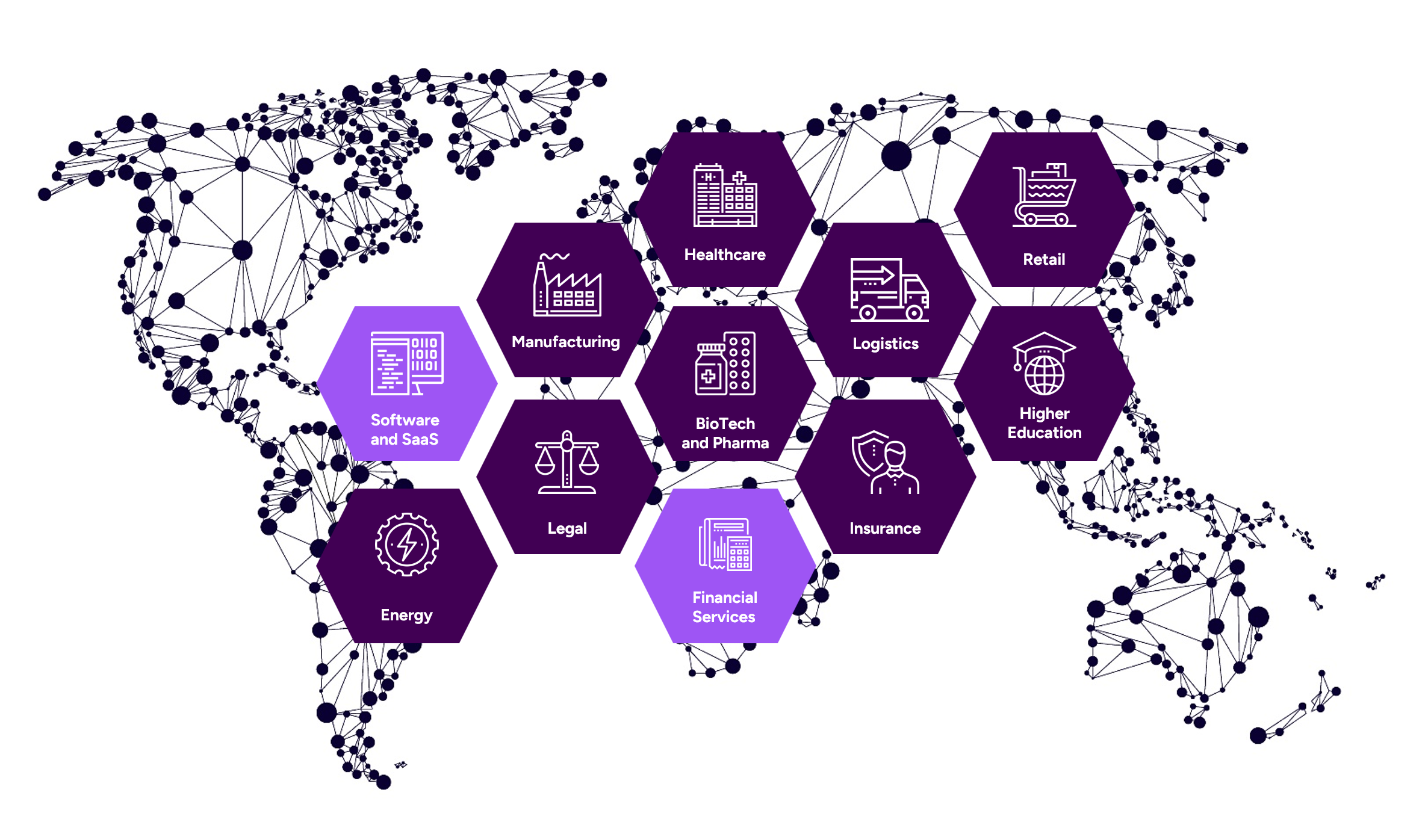September 25, 2023
What Business Leaders Should Know About Generative AI

The digital landscape has witnessed the groundbreaking rise of generative AI tools like ChatGPT, Midjourney, and many others, leaving many business leaders at a crossroads.
Is this another fleeting tech craze or a genuine shift in how we conduct business? How can we harness this potential for tangible business benefits?
With ChatGPT achieving a staggering 100 million user base in a mere two months, it’s hard to dismiss the force behind generative AI. This isn’t just a new toy for the tech-savvy. Its success lies in its universal appeal – it breaks down the complexities of AI, making it approachable to anyone with internet access.
About Generative AI
What is Generative AI?
Generative AI enables users to generate new content based on a variety of inputs quickly. Inputs and outputs to these models can include text, images, sounds, animation, 3D models, or other data types. Generative AI models use neural networks to identify the patterns and structures within existing data to generate new and original content.
One of the breakthroughs with generative AI models is the ability to leverage different learning approaches, including unsupervised or semi-supervised learning, for training. This has allowed organizations to leverage a large amount of unlabeled data more easily and quickly to create foundation models. As the name suggests, foundation models can be used as a base for AI systems performing multiple tasks.
More Than Meets the Eye
The pace at which AI is advancing is nothing short of astonishing. With a surge in adoption by startups and swift incorporation into modern software applications, the breadth and depth of this technology have expanded considerably. Here, we delve into the vast landscape of generative AI applications, shedding light on their distinctive characteristics compared to traditional AI models.
Built on Foundation Models
Generative AI is built on Foundation Models, which are algorithms constructed by an AI neural network trained on mountains of raw data that can be adapted to accomplish a broad range of tasks. Foundation Models are the basis of AI in business operations.

Large Language Models (LLM)
Examples of foundation models include Large Language Models like GPT-3, which allow users to leverage the power of language. Popular applications like ChatGPT, which draws from GPT-3 allow users to generate content and conversations based on short text requests called prompts. LLM applications can automate customer support, assist in data analysis, generate content, and provide decision-making insights, thereby saving time and resources while enhancing productivity and customer experience.
Beyond Chatbots
Generative AI encompasses a broader spectrum of accelerating work. It’s very important to emphasize that this discussion centers on the enhancement aspect of generative AI rather than its potential to replace human intervention.
While the limelight remains affixed on text-based chatbots like ChatGPT, generative AI’s capabilities extend far beyond. It encompasses various content types— from text to images, videos, audio, and even computer code. Its potential functions within an organization are multifaceted, from classification and editing to summarization, responding to queries, and content drafting. Let’s explore these functionalities through real-world applications:

Analyze And Classify.
Generative AI: Is it a Goldmine?
Just consider the transformative power of AI in sales. Where it once offered static sales suggestions based on pre-existing customer data, generative AI analyzes real-time conversations, offering dynamic sales strategies, and even drafts pitches. It’s not limited to sales; every professional role stands to gain from the integration of generative AI. And while there are concerns over AI replacing human jobs, its true potential lies in complementing human skills. Envision a scenario where generative AI is woven into standard tools like business intelligence (BI) to respond to specific questions. The next step could be to combine this with the integration of office tools like emails or word processors, enhancing worker efficiency and productivity.
How to Respond to This?
So, is it time to dive headfirst into this new wave? It’s not a one-size-fits-all answer. Some companies might spot an opportunity to overhaul their processes with AI, while others might favor a more cautious, phased approach. Success hinges on the company’s readiness in terms of technical know-how, infrastructure, operational frameworks, and risk management systems. Through this first briefing in a larger series, we aim to guide CEOs and their teams through the maze of AI. We start with a summarized introduction to generative AI and dive into its diverse applications through real-world cases to close with some practical advice on a CEO’s crucial role in ensuring successful AI adoption.
How Generative AI Differs from Other AI
The Uniqueness of Generative AI
Generative AI stands apart from its predecessors primarily in its ability to craft new content seamlessly, particularly in “unstructured” formats like text or imagery that defy conventional table-based representations.
The lifeblood of generative AI is the “foundation model.” A cornerstone of these models, the transformer, exemplified by GPT’s name, which stands for Generative Pre-trained Transformer, is an artificial neural network honed using deep learning, indicating the profound layers within these networks. It’s worth mentioning that deep learning is behind the latest AI innovations.
Yet, what elevates foundation models from their forerunners? Firstly, their training involves massive and diverse sets of unstructured data. Take, for instance, large language models; they are trained on enormous textual data available online spanning endless different subjects. In contrast, other models are fine-tuned for specific datasets, like recognizing objects in photos.
Conventionally, deep learning models were limited in function, perhaps identifying objects in images or predicting trends. Foundation models, however, are multifaceted; they can do both and even generate content. Their prowess arises from discerning patterns in the extensive data they process, allowing them, for instance, to predict subsequent words in a text. This versatility means one foundation model can cater to diverse business needs, a feat previous models struggled with. For businesses, this means quicker applications and faster returns on investment.
However, some challenges persist. For instance, large public language models (Like ChatGPT) can occasionally “hallucinate,” making assertions that sound accurate but aren’t. The logic behind their responses underlines the need for private, sovereign solutions that are built on your data that don’t have this drawback.
While pioneering foundation models demanded hefty investments due to extensive training requirements and refining efforts, they were primarily championed by tech giants, well-funded startups, and some enterprises. However, the tide is shifting. Efforts are directed at developing smaller, efficient models and democratizing access for a larger public. These models are provided in the form of the NVIDIA DGX / AI Enterprise platform. Built for Enterprise use and Data Privacy, optimized for NVIDIA supercomputers, and delivered with the support your teams need.

Putting Generative AI to work
You can’t simply view generative AI as an optional add-on. Its potential to deliver unmatched value across various business scenarios makes it imperative. The barrier to entry, both financially and technically, is relatively low, yet the repercussions of neglect could lead to a significant competitive disadvantage. Business leaders, in collaboration with their executive teams, must deliberate on the strategic importance of generative AI. For some, it could be a transformative tool capable of revolutionizing processes from R&D to customer relations. Others might opt for a more incremental approach, starting with pilot projects before full-scale adoption. Regardless of the approach, once the strategic path is determined, AI specialists can chart the technical course to bring this vision to life.
Generative AI in everyday work
The most immediate impact of generative AI for many organizations may be subtle yet profound. Workers will find AI-enhanced functionalities woven into their familiar software tools. Email platforms could draft preliminary versions of messages. Productivity software might generate a presentation’s first draft from a mere description. Financial applications could offer narrative summaries of key financial report highlights. CRM systems could advise on optimal customer engagement strategies. Such integrations promise to boost the efficiency of every knowledge worker, making complex tasks more manageable.
Powerful example of transformation
AI technologies are revolutionizing many industries. From automating complex workflows in manufacturing to personalizing customer experiences in retail, from enhancing predictive maintenance in transportation to uncovering insights in financial markets—AI’s adaptability and scalability make it a powerful tool across sectors.
Beyond these everyday utilities, generative AI promises deeper, more transformative impacts for businesses willing to dive deep. Here is a real-world example of how healthcare can leverage generative AI, ranging from simple implementations to more intricate endeavors.

Patient Engagement
Chatbots and virtual health assistants based on generative models can engage patients in their healthcare journey, offering reminders, explanations, and even emotional support.
Telemedicine and Remote Monitoring
Foundation Models can act as the first point of contact in telemedicine solutions, collecting preliminary data, asking relevant questions, and even making provisional recommendations that healthcare professionals can later review.
Clinical Decision Support
AI foundation models can assist physicians by analyzing large volumes of medical literature, patient data, and guidelines to generate evidence-based recommendations. This can be particularly useful in complex cases where multiple comorbidities are involved or when new treatment modalities are available.
Personalized Medicine
AI can analyze data at scale to identify patterns or trends that may not be apparent to human clinicians. This can help tailor treatment plans to individual patient characteristics, thereby optimizing therapeutic outcomes.
Accelerating Drug Discovery
AI models can significantly expedite the process of drug discovery by predicting how different compounds can interact with targets. They can analyze existing medical literature to suggest new research pathways or drug combinations.
Diagnostics
Advanced AI models can aid in diagnostic processes by analyzing medical images, genomic data, or time-series data like ECGs. While these models often require specialized training beyond text-based data, foundation models can act as a part of ensemble methods or offer interpretative insights.
Hospital Operations
From optimizing scheduling to predictive maintenance of medical equipment, AI can make hospital operations more efficient. This, in turn, can reduce costs and improve patient experiences.
Data Privacy and Ethics
AI can also help ensure data privacy by facilitating secure data-sharing models and identifying potential breaches. However, this also raises questions about who can access the data and how it’s used.
Regulatory Compliance
AI can help healthcare providers adhere to an increasingly complex set of guidelines and laws by automatically updating them about relevant changes and offering suggestions for compliance.

Immense potential for all industries
The example shows that the potential is immense. Yes, there are also challenges like data privacy concerns, the need for decision traceability (why did the AI do this? Also called explainability), and the risk of perpetuating biases present in the training data. Nevertheless, the integration of generative AI models into healthcare is an exciting development that will improve efficiency, reduce costs, and, most importantly, improve patient outcomes.
The transformative potential of AI across industries is immense, shaping a future where data-driven decision-making becomes the norm rather than the exception.
AI’s ability to analyze vast amounts of data to generate actionable insights, thereby increasing efficiency, reducing costs, and unlocking new opportunities, will reshape our future, no doubt.
Getting started
- Prepare Your Data for AI
Revamp your data strategies to fully harness AI’s capabilities. This involves consolidating data sources into unified repositories, transforming unstructured data (like emails, images, and social media content) into structured formats, and ensuring seamless AI access through databases and standardized formats. By streamlining these processes, customers can unlock AI’s potential, enabling deeper insights and new discoveries. - Enable the Right Technology Stack
Generative AI runs on GPU-powered infrastructure, which is the backbone of a successful AI venture for your business. CTOs should evaluate if the company possesses the necessary computational resources, data systems, AI frameworks, and tools to effectively implement AI. - Constructing a Lighthouse
Stagnation in the planning phase is a trap business leaders must evade. The rapidly evolving landscape of generative AI warrants swift action. A ‘lighthouse’ or flagship project can exhibit the transformative potential of generative AI within a company. By spotlighting initial successes, businesses can gain traction, fostering an essential culture of innovation. - Weighing Risks vs. Rewards
Leaders need to score the potential of generative AI against inevitable risks. Leadership should construct a set of values and principles for generative AI applications while gaining in-depth insight into the risks of each application. - Focus on Talent and Expertise
Deploying generative AI efficiently mandates upskilling the workforce. Companies must endeavor to educate their existing teams, while leaders need to make sure the required competencies are there (education, recruitment, or partnerships). Encouraging a culture of self-initiated research and experimentation can propel employees to boost knowledge and adoption. - Ecosystem Approach to Partnerships
Aligning with the right partners can turbocharge execution, allowing businesses to swiftly harness the latest generative AI technologies without reinventing the wheel. Working with partners like NEBUL on Platforms like NVIDIA DGX and AI Enterprise provides turn-key solutions that remove the barriers to entry and complexity to achieve real-world results.
Closing Considerations
Role of the C-Suite
The C-Suite has a crucial role to play in the company’s focus on generative AI. In this closing section, we discuss strategies that CXOs will want to keep in mind as they begin their journey. Many of them echo the responses of senior executives to previous waves of new technology. However, generative AI presents its own challenges, including managing a technology moving at a speed not seen in previous technology transitions.
Vital insights for business leaders as they delve into the world of generative AI:
- Practical use cases that positively impact job roles are already in operation. From pharmaceuticals to banking and retail, businesses across various sectors are adopting a spectrum of use cases to harness the potential of value generation. These can be deployed on a small or large scale, depending on the size and vision of your company.
- Financial commitment to venture into generative AI differs greatly, influenced by factors like the chosen use case, data and software requirements, cloud setup, technical know-how, and risk mitigations. Every company must be vigilant about potential risks, with some projects demanding more resources than others.
Bias for action
Businesses have been pursuing AI ambitions for years, and many have realized new revenue streams, product improvements, and operational efficiencies. Much of the successes in these areas have stemmed from AI technologies that remain the best tool for a particular job, and businesses should continue scaling such efforts.
However, generative AI represents another promising leap forward and a world of new possibilities. While the technology’s operational and risk scaffolding is still being built, business leaders know they should embark on the generative AI journey. But where and how should they start? The answer will vary from company to company as well as within an organization. Some will start big; others may undertake smaller experiments. The best approach will depend on your aspiration and risk appetite.
Whatever the ambition, the key is to get under way and learn by doing.
Comments, Remarks or Questions? We are happy to start a conversation to see how we can help you make the next step and gear into action.
Download this Executive here in: English or in Dutch